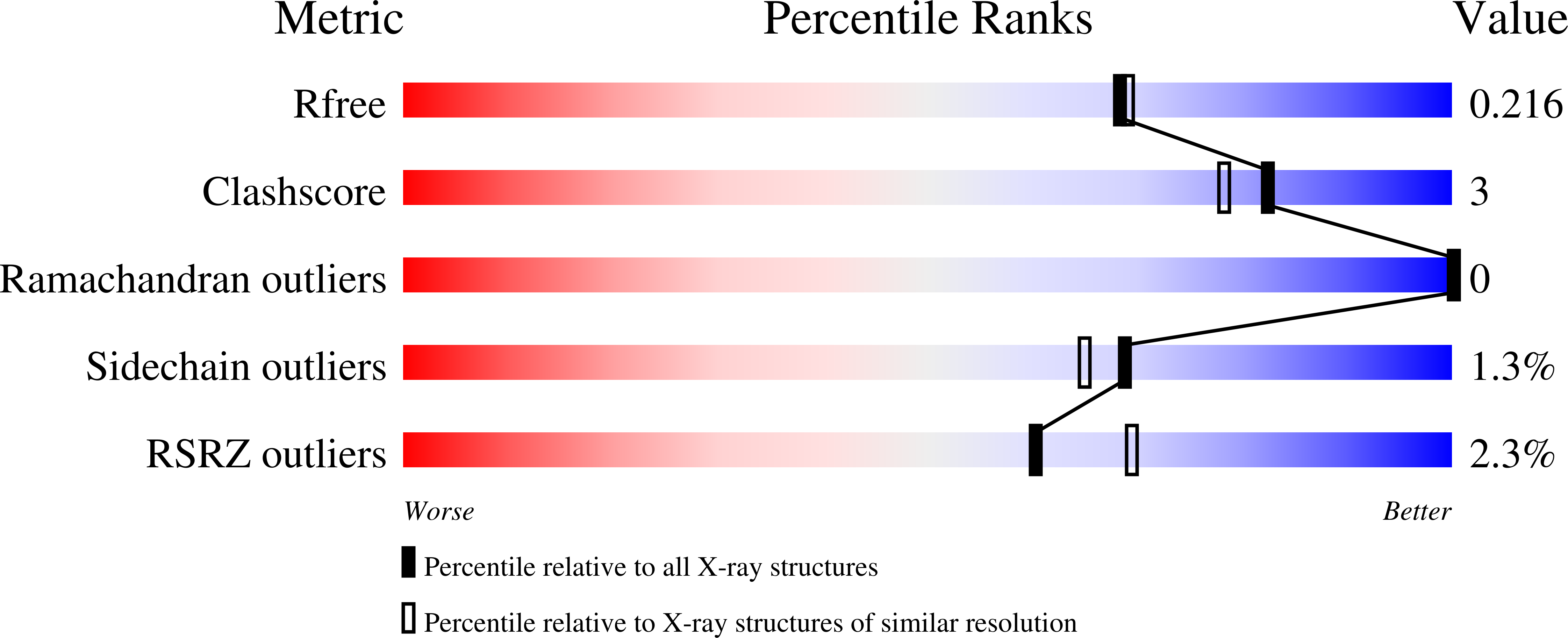The structural basis of oligosaccharide binding by rice BGlu1 beta-glucosidase
Chuenchor, W., Pengthaisong, S., Robinson, R.C., Yuvaniyama, J., Svasti, J., Ketudat Cairns, J.R.(2011) J Struct Biol 173: 169-179
- PubMed: 20884352
- DOI: https://doi.org/10.1016/j.jsb.2010.09.021
- Primary Citation of Related Structures:
3AHT, 3AHV, 3F4V, 3F5J, 3F5K, 3F5L - PubMed Abstract:
Rice BGlu1 β-glucosidase is an oligosaccharide exoglucosidase that binds to six β-(1→4)-linked glucosyl residues in its active site cleft. Here, we demonstrate that a BGlu1 E176Q active site mutant can be effectively rescued by small nucleophiles, such as acetate, azide and ascorbate, for hydrolysis of aryl glycosides in a pH-independent manner above pH5, consistent with the role of E176 as the catalytic acid-base. Cellotriose, cellotetraose, cellopentaose, cellohexaose and laminaribiose are not hydrolyzed by the mutant and instead exhibit competitive inhibition. The structures of the BGlu1 E176Q, its complexes with cellotetraose, cellopentaose and laminaribiose, and its covalent intermediate with 2-deoxy-2-fluoroglucoside were determined at 1.65, 1.95, 1.80, 2.80, and 1.90Å resolution, respectively. The Q176Nε was found to hydrogen bond to the glycosidic oxygen of the scissile bond, thereby explaining its high activity. The enzyme interacts with cellooligosaccharides through direct hydrogen bonds to the nonreducing terminal glucosyl residue. However, interaction with the other glucosyl residues is predominantly mediated through water molecules, with the exception of a direct hydrogen bond from N245 to glucosyl residue 3, consistent with the apparent high binding energy at this residue. Hydrophobic interactions with the aromatic sidechain of W358 appear to orient glucosyl residues 2 and 3, while Y341 orients glucosyl residues 4 and 5. In contrast, laminaribiose has its second glucosyl residue positioned to allow direct hydrogen bonding between its O2 and Q176 Oε and O1 and N245. These are the first GH1 glycoside hydrolase family structures to show oligosaccharide binding in the hydrolytic configuration.
Organizational Affiliation:
Schools of Biochemistry and Chemistry, Institute of Science, Suranaree University of Technology, Nakhon Ratchasima 30000, Thailand. watchalee_lee@hotmail.com



















